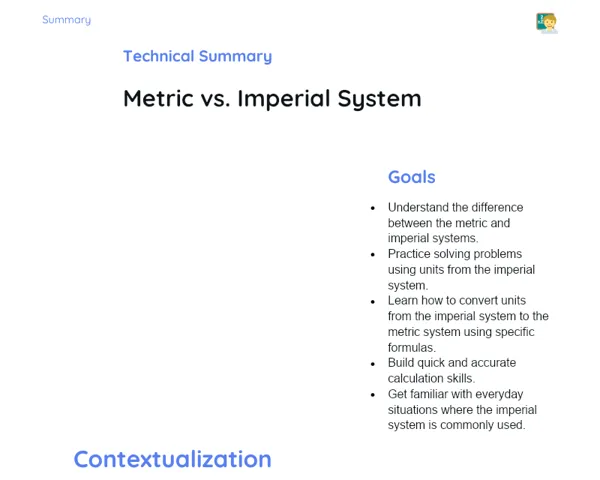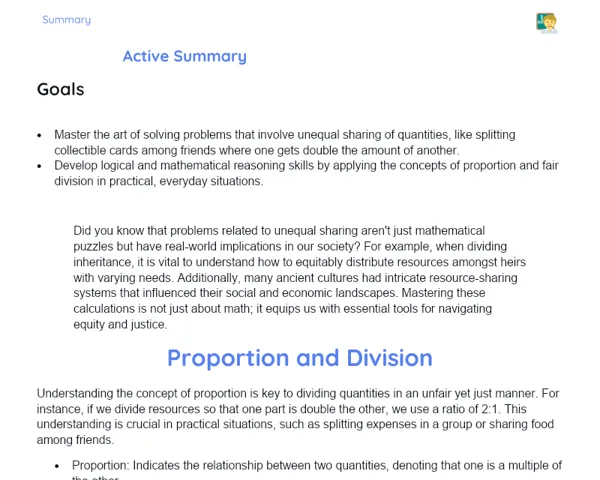Socioemotional Summary Conclusion
Goals
1. 🔍 Grasp why the total of the internal angles of a quadrilateral always adds up to 360°.
2. 📐 Learn how to calculate unknown angles in a quadrilateral given the others.
3. 🧠 Build socio-emotional skills like self-awareness and self-control while tackling math problems.
Contextualization
Have you ever wondered why knowing the internal angles of a quadrilateral is so important? This concept plays a key role in fields like engineering and architecture. Imagine planning a new building or a public park where every angle and measurement needs to be spot on. 📏✨ The math you learn today is the very tool that professionals across the globe use to design structurally sound and attractive spaces. Let’s work together to solve these angle problems and bring our ideas to life!
Exercising Your Knowledge
Definition of Quadrilateral
A quadrilateral is a polygon with four sides and four vertices, a basic geometric figure that shows up not only in our math problems but also in design, architecture, and many parts of our everyday lives.
-
🔹 A quadrilateral has four sides and four vertices.
-
🔹 Common types include squares, rectangles, trapezoids, and parallelograms.
-
🔹 Knowing these shapes helps us solve various problems in fields like engineering and creative design.
Sum of Internal Angles
No matter what type of quadrilateral you have, the sum of its internal angles is always 360 degrees. This idea is key to solving geometric puzzles and gives us a better grip on how different shapes work.
-
🔹 Every quadrilateral, irrespective of its shape, has an internal angle sum of 360 degrees.
-
🔹 This fact helps us determine unknown angles when the other angles are given.
-
🔹 Knowing the total of internal angles is crucial in fields such as architecture and engineering, where precision is the heart of the work. 🌆🏗️
Calculation of Missing Angles
To find a missing angle in a quadrilateral, all you need to do is subtract the sum of the known angles from 360 degrees. This is not only handy in class but also sharpens your overall problem-solving skills.
-
🔹 Add up the known angles and subtract this sum from 360 degrees to get the missing angle.
-
🔹 For example, if the known angles are 30°, 70°, and 50°, their sum is 150°. Hence, the missing angle is 360° - 150° = 210°.
-
🔹 This technique can be applied in everyday situations, like planning room layouts or designing safe, functional structures. 🏢🛠️
Key Terms
-
Quadrilateral: A polygon with four sides and four vertices.
-
Sum of Internal Angles: The total of the internal angles of a quadrilateral, which is always 360 degrees.
-
Missing Angle: The angle that completes the 360 degrees total, found by subtracting the sum of the known angles from 360 degrees.
For Reflection
-
🎯 How did you feel while working on problems related to the internal angles of quadrilaterals? Were there times when you felt a bit down? How did you manage these feelings?
-
🔍 Can you see any link between understanding the sum of internal angles and real-life situations, like designing a room or solving a tricky problem? Share your thoughts.
-
💡 Why is it important to remain calm and focused when dealing with math challenges? How does taking deep breaths help in such moments? Try it out and tell us about your experience.
Important Conclusions
-
📏 The sum of the internal angles of a quadrilateral is always 360 degrees—a core idea in geometry.
-
🔍 Being able to calculate the unknown angles in a quadrilateral is a crucial skill for solving math problems.
-
🧠 Cultivating socio-emotional skills like self-awareness and self-control is equally important to handle frustrations and overcome math challenges.
Impacts on Society
👷♂️ Understanding the internal angles of quadrilaterals has practical implications in many fields. For instance, architects and engineers rely on this knowledge to design buildings and public spaces with precise and functional layouts. Imagine planning a park or even designing a virtual world in a computer game—every angle counts! This precision ensures that the final design is not only attractive but also safe and efficient. Daily, we see its impact in the houses we live in and the parks where we unwind. 🎮
🌍 Moreover, the ability to compute internal angles enhances our overall problem-solving skills, which is useful in many situations, from decision-making in our personal lives to academic challenges. By learning to manage our emotions while tackling math problems, we also prepare ourselves to deal with day-to-day challenges more effectively.
Dealing with Emotions
💡 RULER Exercise: At home, pick a math problem involving the internal angles of a quadrilateral. First, notice how you feel when you see the problem—are you a bit anxious or confident? Then, try to understand why you feel this way. Is it because of the difficulty of the problem or the pressure to solve it correctly? Identify and name this emotion. Next, share your feelings with someone close to you. Finally, take a few deep breaths to calm down and approach the problem step by step. This exercise can really help in managing emotions, both in studies and in everyday life.
Study Tips
-
📝 Practice regularly: Solve problems on internal angles of quadrilaterals daily to strengthen your understanding.
-
📚 Make analogies: Relate geometric concepts to everyday scenarios, like planning the design of a house or a garden.
-
🤓 Study in groups: Discussing problems and strategies with friends or classmates can offer fresh insights and help you learn better.



